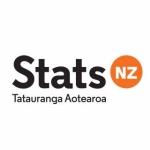New Zealand Unemployment rises
In seasonally adjusted terms, New Zealand’s unemployment rate rose from 6.0 percent to 6.8 percent during the June 2010 quarter, Statistics New Zealand said today.
This rise unwinds much of the drop in unemployment seen in the March 2010 quarter, and indicates a period of volatility in the labour market.
Unemployment rose 19,000 during the June 2010 quarter to reach 159,000, marked by an increase in unemployed males. As with the fall in the March quarter's unemployment, the rise this quarter was largely unexpected, and reflected movements among younger males.
“There have been recent fluctuations in both employment and unemployment, which can occur during periods of major change in the labour market,” manager of labour market statistics Peter Gardiner said.
“These movements indicate that the labour market is still adjusting to the changing economic climate.”
The recent volatility in unemployment estimates is making it more difficult to interpret the results. The underlying or trend unemployment rate, which excludes seasonal and unexpected changes can be used to help understand labour market conditions. At 6.7 percent, the trend unemployment rate has been relatively flat since September 2009.
In the last year, growth in the working-age population has out-stripped employment growth. This, coupled with relatively high and stable labour force participation during the year has kept unemployment up.
Employment decreased by 6,000 during the June 2010 quarter, following a 21,000 increase last quarter.
Part-time work fell, while full-time employment rose. Consistent with the rise in full-time work, both usual and actual hours worked increased during the quarter, indicating that those in work are working more hours.
The Household Labour Force Survey results are based on a representative sample of 15,000 households throughout New Zealand. The survey is designed to produce estimates of the numbers of people employed, unemployed, and not in the labour force.
